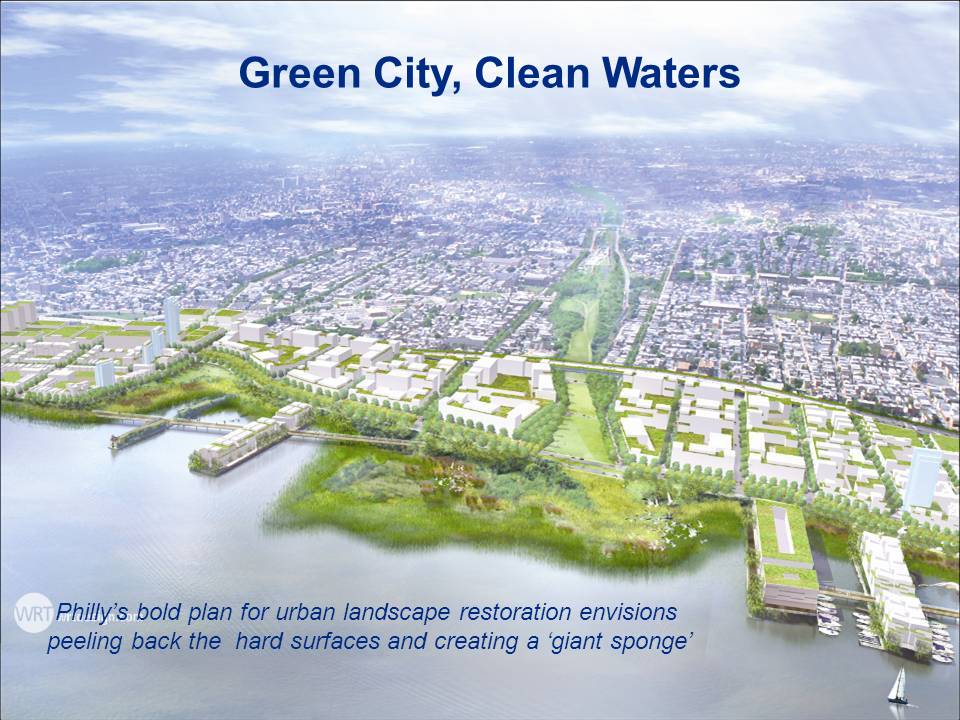Philadelphia plans to invest $1.6 billion to turn a third of city green in next 20 years
Philadelphia’s ‘All Green’ Stormwater Plan Raises Eyebrows at EPA
The New York Times reports that Philadelphia has a groundbreaking idea about what to do with rainwater: Use it to feed grass and trees instead of letting it rush into the sewers.
“Stormwater poses a costly and burgeoning problem in the United States, where 772 cities have sewer systems that collect wastewater and storm runoff in the same pipes. The systems are designed to overflow during heavy rains, sending raw sewage and other waste into streams and rivers so as not to overwhelm treatment plants,” explains the New York Times article.
Because traditional engineering options are expensive, Philadelphis is proposing an alternate solution: Invest $1.6 billion to turn a third of the city green in the next 20 years. The plan involves replacing streets, parking lots and sidewalks with water-absorbing porous pavement, street-edge gardens and trees.
To Learn More:
To read the complete story in the New York Times, click on City’s ‘All Green’ Stormwater Plan Raises Eyebrows at EPA. To download a PDF copy, click here.
More About Philadelphia’s Plan
 The City of Philadelphia’s plan is now in the hands of the United States Environmental Protection Agency (EPA), which must decide whether to approve it.
The City of Philadelphia’s plan is now in the hands of the United States Environmental Protection Agency (EPA), which must decide whether to approve it.
While the agency officially encourages cities and states to use green infrastructure, EPA has never been asked whether it alone is an acceptable way to address combined-sewer overflows.
To Learn More:
Click on Philadelphia’s bold plan for rainwater/stormwater management envisions “giant sponge” and read a story posted previously on Water Bucket’s Rainwater Management Community-of-Interest.
Combined Sewer Overflow Reduction
In 2006, a report commissioned by the Water Environment Research Federation helped to define the state-of-the-practice regarding the use of green infrastructure to reduce the volume of rainwater runoff generated in urban areas.
To Learn More:
Click on Decentralized Stormwater Source Controls for Urban Retrofit and Combined Sewer Overflow Reduction.



